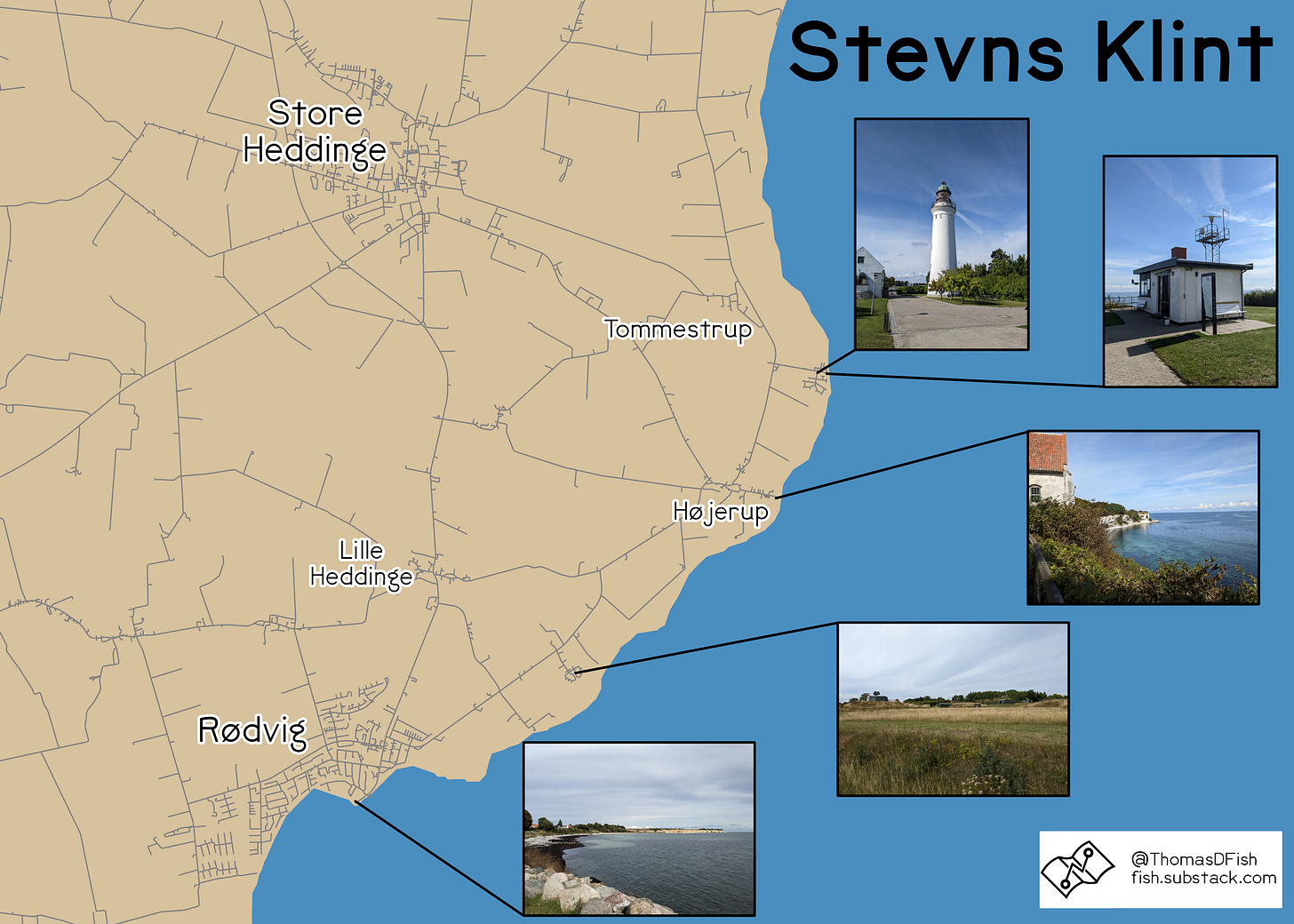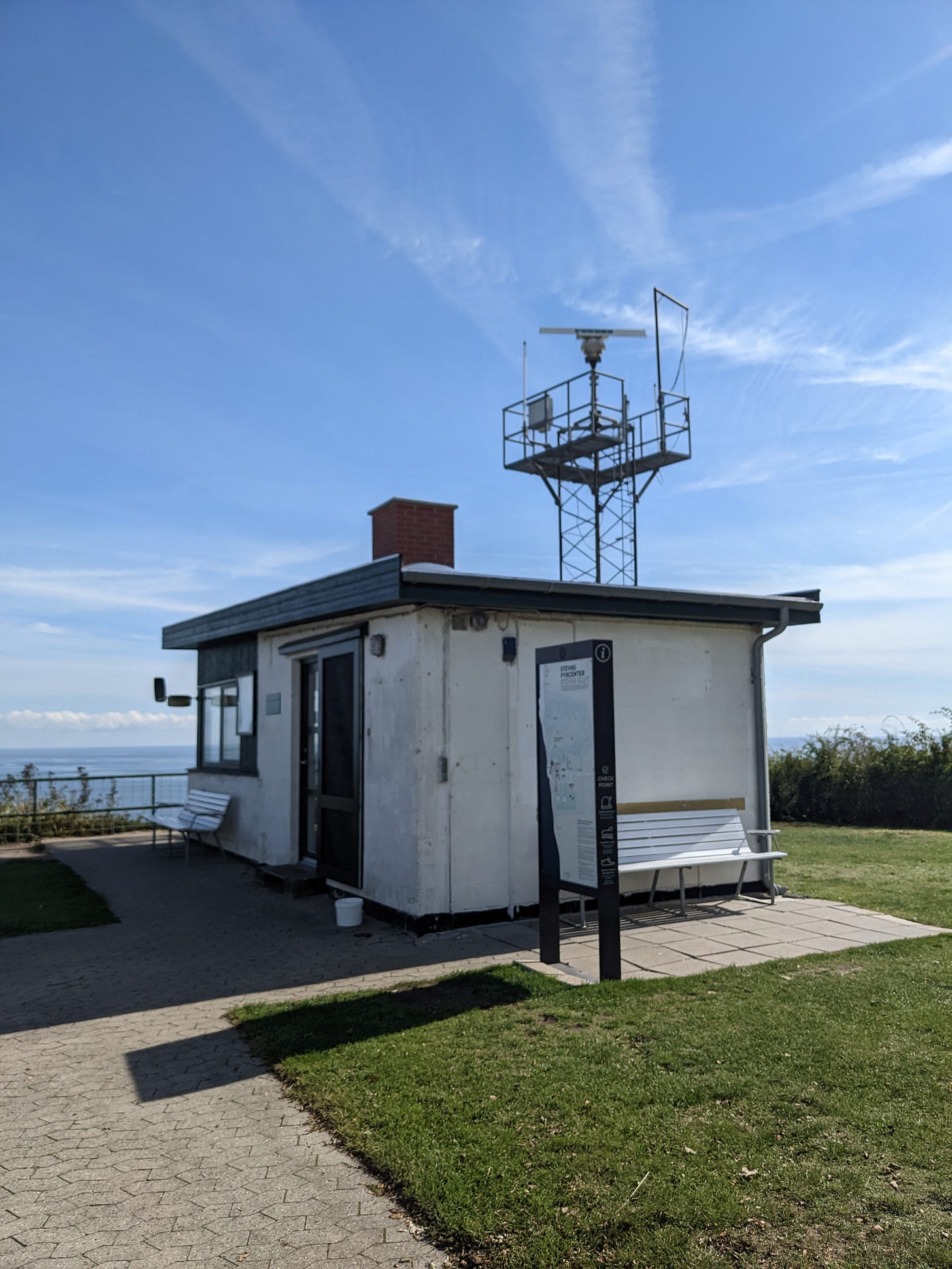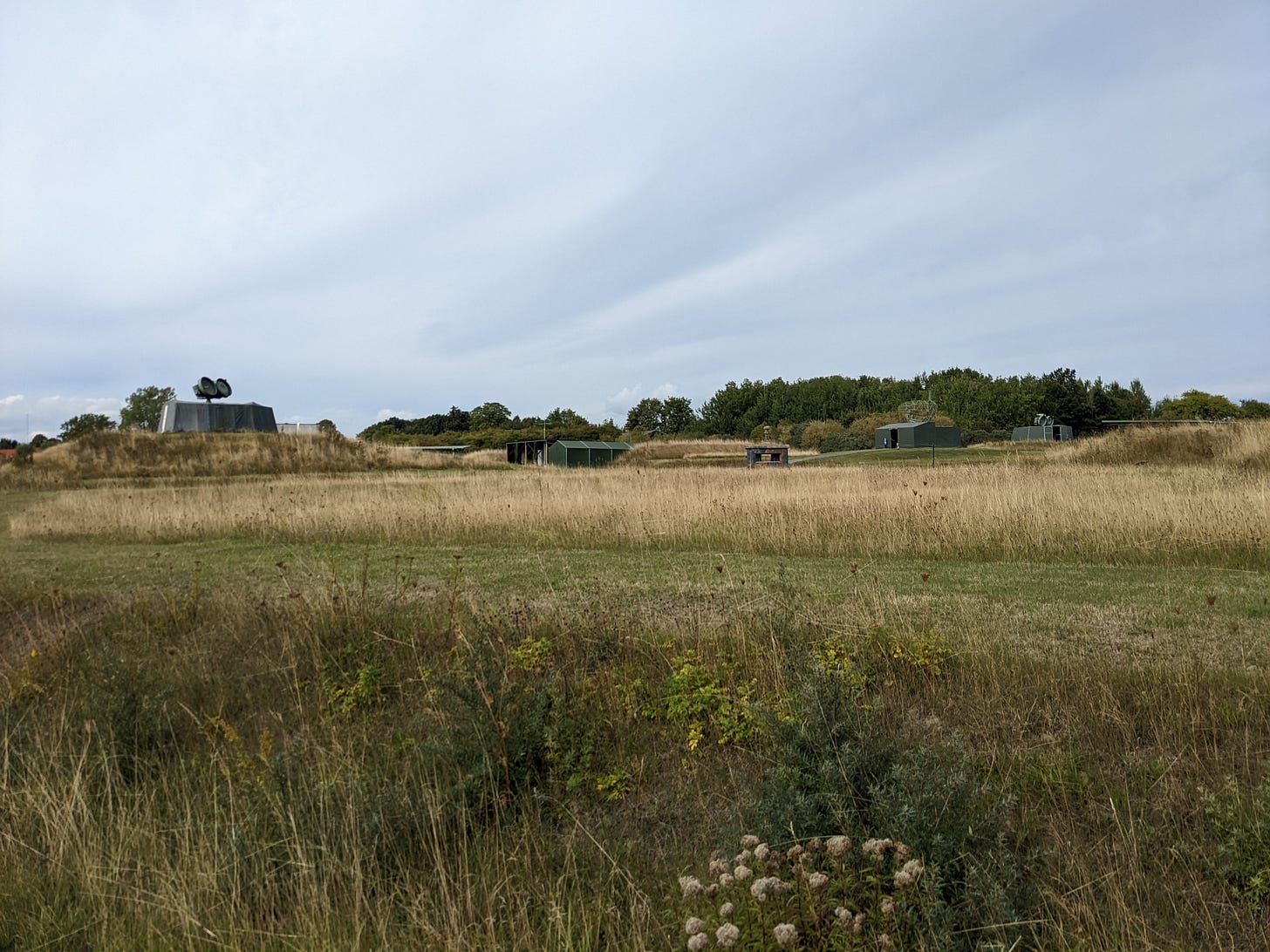Exploring Stevns Klint
Nature, church ruins, and a cold war fort
I apologize for my silence over the past two weeks. Last week my brother was here in Copenhagen. The week before, I was preparing the house for his arrival. While he was here, it provided an excuse to do all the touristy things that I had wanted but never got around to doing. That included first-time visits to Rosenborg Slot, Kronborg Slot, Helsingborg, Frederiksborg Slot, Roskilde Catheral, and the ARKEN Museum for Moderne Kunst. All were exciting places to go, though there were only so many castles I could tour in a two-day span without them running together. If you plan a trip to Copenhagen for the first time, I strongly recommend you plan trips out of the city to see the rest of Zealand.
For something slightly off the well-trodden path, I suggest Stevns Klint. The cliffs are a UNESCO site, so you aren’t heading to an unknown location, but it requires a car or the willingness to take a train to the end of the line and then bike 15 to 40 km round trip on rural roads to see everything. But, it was worth the journey. The vistas are beautiful, and the area oozes with Cold War history. It is a perfect place to build your American hipster dad (or mom) credit and stake your claim to a time period other than World War II or the American Civil War to obsess over.
Trip
My brother and I spent most of a day just visiting a 7 km stretch between the Stevns Lighthouse just south of Tommerstrup and Rødvig. Unlike other roads with attractions along them, the roads that run alongside Stevns Klint are narrow, run along farm fields, and are a distance from the water. If you start in the north, it is very possible to miss that you are at a UNESCO site.
Lighthouse
The first place we went to was the Stevns Lighthouse. It is still in operation, and you can climb it in the summer to see Sweden and Copenhagen. A few exhibits in one of the lighthouse’s outbuildings explain the area's geology. To the south, the ruins of a SAM battery are open for exploration. All of those were cool, but they did not compare to this nondescript white building.
This unassuming building is where an important part of the Cuban Missile Crisis took place. The Danish soldier watching the Øresund on October 24, 1962 witnessed the Krasnograd turn around and head back to the Warsaw Pact with its load of military equipment.1 This was seen as a sign by NATO that Nikita Khrushchev was not planning on going to war to place missiles in Cuba. John F. Kennedy’s blockade worked.
Højerup
A small church was built on the side of the cliff in Højerup in the 13th Century. In 1910, a new church was built a short distance away due to worries about subsidence as the limestone and chalk beneath it crumbled away. Eighteen years later, the back sections of the church, including the altar, fell into the sea.
The remains of the church were reinforced with cement creating a small overlook in the rear of the church. From it, you get your first glimpse at the white cliffs. A few meters to the south, there are steep steps if you would like to walk down to the water and view the church and cliffs from below.
Stevnsfort
During the Cold War, one of the likely areas to receive intense fighting if war broke out between the Warsaw Pact and NATO was the Øresund. For much of the conflict, the largest naval fleets of the USSR and her allies were in the Baltic Sea. The key goal initial phase of most battle plans was getting them out to the North Sea. NATO knew this and made plans to mine and secure the sound.
Stevnsfort was a key part of those plans. It featured a sprawling above-ground array of surface-to-air missiles and large guns. Underground there was a sprawling bunker carved into the rock. When the Danish military left the fort in 2000, the complex was preserved as a museum. They offer self-guided tours above ground and guided tours of the bunker.
Rødvig
At the south end of Stevns Klint lies the town of Rødvig. It is the only town along the cliffs and the site of the closest train station. The overlook beside the town’s harbor provides a beautiful last look at the cliffs.
There is probably more to say about Rødvig, but my brother and I had to leave quickly once we got there. It was later than we expected, and we had a dinner reservation in Copenhagen.
Peer Henrik Hansen (2012). “The Cuba Crisis of 1962—As Seen through Danish Intelligence Sources.” in Cold War International History Project Bulletin, issue 17/18. Page 708.







